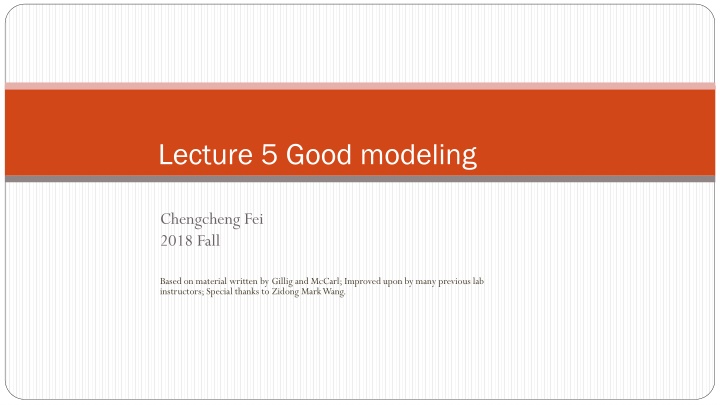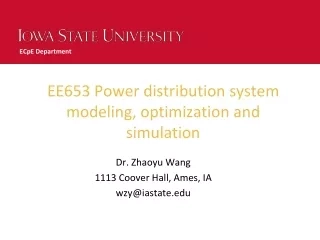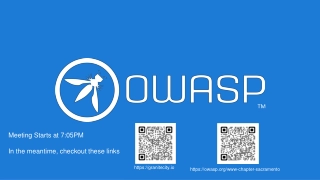
Effective Modeling Practices for User-Friendly Code Development
Explore the importance of user-friendly modeling in code development, discussing features like longer names, descriptive comments, raw data inclusion, and subset definitions. Learn about naming conventions in GAMS for efficient documentation and code readability.
Download Presentation

Please find below an Image/Link to download the presentation.
The content on the website is provided AS IS for your information and personal use only. It may not be sold, licensed, or shared on other websites without obtaining consent from the author. If you encounter any issues during the download, it is possible that the publisher has removed the file from their server.
You are allowed to download the files provided on this website for personal or commercial use, subject to the condition that they are used lawfully. All files are the property of their respective owners.
The content on the website is provided AS IS for your information and personal use only. It may not be sold, licensed, or shared on other websites without obtaining consent from the author.
E N D
Presentation Transcript
Lecture 5 Good modeling Chengcheng Fei 2018 Fall Based on material written by Gillig and McCarl; Improved upon by many previous lab instructors; Special thanks to Zidong Mark Wang.
Why bother ? How easy is it to reuse or modify a model at a later time for you? How easy can a colleague work with your code? A user-friendly model should include the following features Using longer names or descriptions Including comments on nature and source of data Including as much raw data as possible as opposed to externally calculated data Less * as a set speciation for input data Using sets to aid in readability A readable format 2
Review: Subset and Upper set One can define subsets containing part of the elements of another set using a set statement. The general format is SET subsetname(setname) optional explanatory text / Elementname1 optional explanatory text Elementname2 optional explanatory text/; where subsetname is the name of the subset and setname is the name of the upper set. 3
Subset 1. Allow items to be treated simultaneously in some places, but separately elsewhere. 4
Subset 2. Allow small to large modeling 3. Conditional statements (discuss in Lab 6) 5
Naming Conventions GAMS allows 63 character long names and 254 characters of explanatory text to define Sets , parameters, tables, scalars, variables, equations, models. The explanatory text must be contained on the same line as the identifier or label it describes. Names longer than 10 characters do not work well in multi-column displays (Example Here) It is wise to make GAMS code to be self documenting by using descriptive character names and make sure that there is no item that goes undefined (e.g. unit, data source) Enter units, sources, and descriptions. Check for completeness with $ONSYMLIST (list the names of all symbols that have been defined and their explanatory text in alphabetical order grouped by symbol type). Check for unused items that are already defined with rf=list.ref in the dialogue box (Example). 6
Using longer names Same algebras but different names 7
Gms file Lst file The Symbol Listing in the lst file after compliation. Default in GAMS is $OFFSYMLIST 8
Including Comments Questions often asked when looking at a set of data are: Where did the data come from? What characteristics such as units, and year of applicability do those data possess? It is nice to go beyond the GAMS 254 character description by putting several lines of description comments identifying what document a data set is from including sources, page numbers, table number, years, units, etc. 10
Raw vs. Calculated Data Modelers often face two choices with respect to data. Enter raw data into GAMS and transform it to the extent needed inside GAMS Externally process data entering the final results in GAMS (e.g. from a spreadsheet where the data are previously manipulated) Recommendation: Put data in as close to the form as it was collected into GAMS and then manipulate the data in GAMS code Justification: (1) Over time spreadsheets change or get lost. (2) Keep a record of what you did. 11
Calculated Data Example Instead of directly entering the transportation cost that was previously calculated in the spreadsheet in GAMS using TABLE statement, one should enter a raw data in GAMS and then let GAMS do a calculation. 12
Cautions about Calculation Dynamic: calculations repeated every time the model is generated. Only calculations in the model .. statements are dynamic Static : calculations executed once only at the place the GAMS instruction appears in the code. 14
Repeated Static: calculations within a GAMS flow control structure (e.g. loop) which are executed repeatedly but are static within the control structure. 15
Dynamic vs. Static Calculation The data on revenue is previously calculated using PARAMETER statement. Then this revenue is used in the OBJ.. equation 16
Universal set * Set references may be indefinite allowing any entries at all by referring to the universal set. One application of the universal set is quick report writing to make summary tables. (Report writing will be discussed in Lab 9). No * In input data Set Specification 17
No * In input data Set Specification * in the first index position of MiscData. GAMS allows anything in that position suppressing domain checking. Suppose we mistyped endinv-value as endinv-valu, then GAMS code would compile and execute w/o a GAMS error but the result would be wrong. 18
No * In input data Set Specification Here if we replace * set with InputItem set, then GAMS would have given the error messages. 19
No * In input data Set Specification The solution from solving the model with mistyping on endinv-value as endinv-valu The solution from solving the model with correction on endinv-value 20
Improve Readability Format the code for readability using spacing and indents. Align item names, descriptions, and definitions Indent in sums, loops, and ifs to delineate terms Use blank lines to set things off Do not split variables between lines in equations, but rather keep them together with all their index positions 21
or this? 23






















